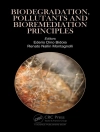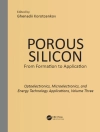Small angle solution scattering (SAS) is increasingly being applied to biological problems. It is a complementary technique that, when applied in appropriate circumstances with carefully structured questions, can provide unique information not available from other techniques. While small angle solution scattering has been around for some time, a confluence of recent developments has dramatically enhanced its power. Intense third generation X-ray sources, low noisedetectors, development of new algorithms and the computational power to take advantage of these have all matured, and use of free-electron x-ray laser sources is on the horizon. Whole new classes of experiments and analyses have been created as a result. These include the generation of molecularenvelopes, the ability to do time-resolved studies, and the ability to account for structural changes using modelling based on the SAS data. The technical improvements have also reduced the amount of time and material needed to carry out an experiment. Beamtime at synchrotron sources is in demand, workshops on the subject are popular and researchers adopting the technique as part of their repertoire are growing. With these in mind, this book was written to guide structural biologists who maywish to adopt the technique, understand its strengths and weaknesses or just have a general interest in its potential.
Thomas D. Grant & Eaton E. Lattman
Biological Small Angle Scattering [PDF ebook]
Theory and Practice
Biological Small Angle Scattering [PDF ebook]
Theory and Practice
Beli ebook ini dan dapatkan 1 lagi PERCUMA!
Bahasa Inggeris ● Format PDF ● Halaman-halaman 248 ● ISBN 9780191649899 ● Penerbit OUP Oxford ● Diterbitkan 2018 ● Muat turun 3 kali ● Mata wang EUR ● ID 8102828 ● Salin perlindungan Adobe DRM
Memerlukan pembaca ebook yang mampu DRM












